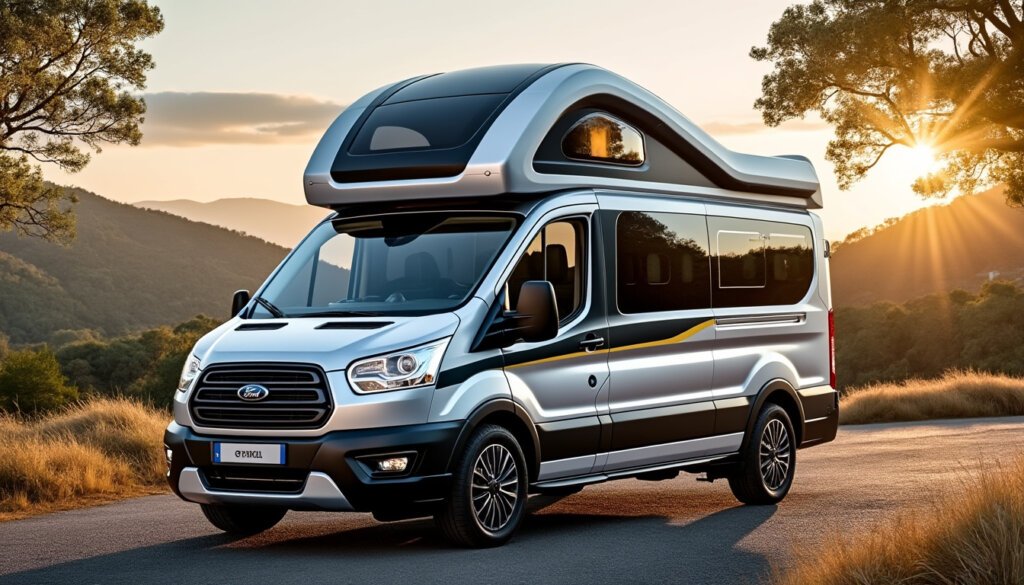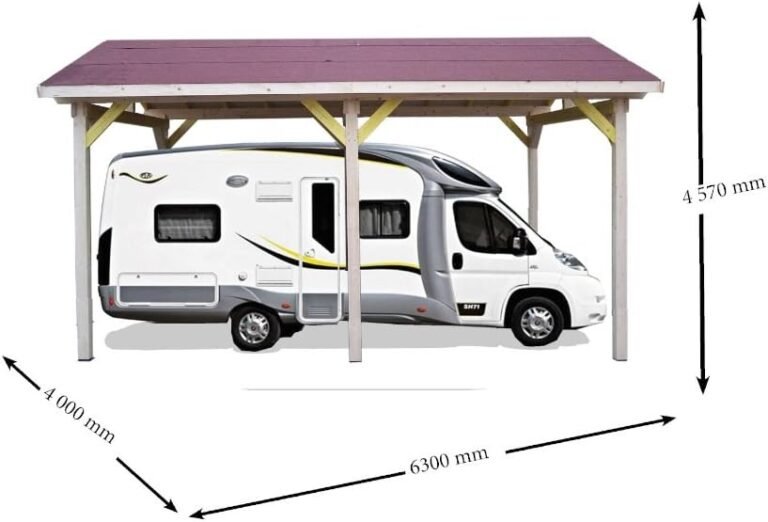Are SUVs polluting? 🚗🌍
SUVs (Sport Utility Vehicles) are enjoying growing popularity worldwide, attracting many drivers thanks to their robust appearance, generous interior space, and elevated driving position. However, in the face of current climate challenges, these vehicles are often criticized for their environmental impact. Heavier, more fuel-intensive, and less aerodynamic than conventional cars, are SUVs really more polluting?
Model Engine
.comparison-table { width: 100%; border-collapse: collapse; margin: 20px 0; font-size: 16px; text-align: left; } .comparison-table th, .comparison-table td { border: 1px solid #dddddd; padding: 8px; } .comparison-table th { background-color: #f2f2f2; font-weight: bold; text-align: center; } .highlight { background-color: #eaf7ea; /* Greenish background for least polluting SUVs */ } .warning { background-color: #fbe3e3; /* Reddish background for most polluting SUVs */ }| CO₂ Emissions | Fuel Consumption | Why? | Toyota Yaris Cross Hybrid | 1.5L Gasoline Hybrid Engine |
|---|---|---|---|---|
| ~100 g/km | 4.5 – 5.0 L/100 km | Lightweight and equipped with an efficient hybrid engine for low energy consumption. | Hyundai Kona Electric | Electric Motor |
| 0 g/km | ~15.4 kWh/100 km | 100% electric with a range of up to 484 km; no direct CO₂ emissions. Kia Niro Plug-in Hybrid | Plug-in hybrid engine | ~30 g/km |
| 1.3 – 2.0 L/100 km | Can run on pure electric power for short distances, minimizing emissions. | Lamborghini Urus | 4.0L Twin-Turbo V8 | ~325 g/km |
| ~14 L/100 km | Heavy, high-performance SUV; high power at the expense of fuel consumption. | Bentley Bentayga W12 | 6.0L Twin-Turbo W12 | ~320 g/km |
| ~13-15 L/100 km | Powerful engine and heavy vehicle; luxury-oriented, with few compromises on efficiency. | Rolls-Royce Cullinan | 6.75L V12 | ~341 g/km |
| ~15 L/100 km | Luxury and comfort at the cost of high fuel consumption; heavy weight and very powerful engine. Understanding SUVs and Their Environmental Impact | To answer this question, we looked at Volvo’s SUV manufacturing, which will produce the Volvo EX30 electric urban SUV in Ghent in 2025. What innovations are being implemented to reduce the environmental impact? | But let’s get back to basics: | What is an SUV? 🤔 |
The SUV, or Sport Utility Vehicle
SUVs are a vehicle category that falls somewhere between a traditional sedan and a 4×4. Its goal is to combine the features of an off-road vehicle (such as a raised driving position and sometimes all-wheel drive) with the comfort and maneuverability of a city car. SUVs can vary in size and engine type, including gasoline, diesel, hybrid, and electric models. Raised driving position : for better visibility on the road and a greater sense of security. Generous interior and trunk space: ideal for families and long-distance trips. Rugged and imposing appearance : many buyers appreciate the “powerful” style of these vehicles.
Good to know:
The SUV market is very diverse, with compact, midsize, and luxury models.
Why are SUVs often perceived as polluting? 🌪️SUVs are associated with higher pollution for several reasons:
- Heavy weight : An SUV is generally heavier than a sedan or compact car. This additional mass results in higher fuel consumption.
- Aerodynamic drag : With their massive, imposing silhouette, SUVs create significant wind resistance, which increases their energy consumption, especially at high speeds.
- Increased fuel consumption : This is particularly true in urban driving, where frequent stops and starts increase fuel consumption. Comparison with other vehicle types 🚘
In terms of CO₂ emissions, combustion-engine SUVs generally emit more than lighter cars: Vehicle type
Average CO₂ emissions/km
Compact sedans
- 100 to 120 g of CO₂/km Compact SUVs
- 120 to 160 g of CO₂/km Large SUVs
- 160 to 200+ g of CO₂/km 💡 Conclusion:
SUVs are, on average, more polluting than light vehicles, particularly due to their weight and less efficient aerodynamics.
SUVs and Environmental Policies 📜
| https://www.youtube.com/watch?time_continue=33&v=CD24f04YStc&embeds_referring_euri=https%3A%2F%2Fwww.wwf.fr%2F&embeds_referring_origin=https%3A%2F%2Fwww.wwf.fr&source_ve_path=Mjg2NjY | Emission Standards and SUVs |
|---|---|
| To meet government requirements, SUV manufacturers must adhere to strict environmental standards. In Europe, the Euro 6 standard imposes specific limits on particulate and nitrogen oxide emissions, aimed at reducing air pollution from internal combustion vehicles. Manufacturers are trying to make their SUVs cleaner by: | Developing more efficient engines: |
| which consume less fuel. | Using lighter materials: |
| to reduce weight without sacrificing safety. | Incorporating energy recovery systems: |
such as regenerative braking in hybrid and electric models. Taxes and incentives 🌱
SUVs often incur additional taxes in some countries due to their high CO₂ emissions. For example, France applies an ecological penalty to vehicles exceeding a certain emission threshold.
SUVs emitting more than 200g of CO₂/km:
subject to a financial penalty that can reach several thousand euros. Incentives for the purchase of hybrid or electric models: to encourage drivers to opt for more environmentally friendly SUVs. Interesting quote:
“SUVs should be taxed based on their environmental impact to empower drivers and encourage them to choose more environmentally friendly vehicles.” –
- Environmental Policy Analyst 2035 Target: Banning Internal Combustion Engines in Europe 🚫
- By 2035, new cars with internal combustion engines could be banned in Europe, in an effort to drastically reduce CO₂ emissions. This measure also applies to SUVs, which will have to be 100% electric or use clean technologies. Consequences for the SUV market
- Switch to all-electric : with 100% electric SUVs promising a reduction in direct CO₂ emissions.
Development of new battery technologies
: to offer competitive driving range while limiting the environmental impact of their manufacturing.
Green SUVs: a step forward for the environment? 🌍
- Manufacturers are increasingly offering “green” SUVs, either electric or plug-in hybrid, to address environmental concerns and consumer expectations. Hybrid and electric SUVs 🌐
- Hybrid and electric SUVs are emerging as an environmentally friendly alternative. Here are their main characteristics: Hybrid SUVs
: combine an internal combustion engine and an electric motor. They can travel short distances in 100% electric mode, thus reducing their fuel consumption. Electric SUVs : Run solely on electricity, eliminating CO₂ emissions during use.
Caution:
Although electric SUVs do not emit CO₂ while driving, their manufacturing, particularly of the batteries, consumes a lot of energy and scarce resources.
Examples of eco-friendly SUVs 🌱
- Some eco-friendly SUV models include: Tesla Model Y
- : 100% electric, zero emissions while driving. Hyundai Kona Electric
: Low environmental footprint, designed to be accessible and sustainable.
Kia e-Niro
: Also electric, it combines an affordable price with a good range.
These models have a reduced environmental impact compared to internal combustion SUVs, although their overall environmental impact still needs to be improved.
- To go further, which do you think pollutes more: an old car or a new SUV? Read the article
- Arguments for and against SUVs: the debate continues 🔄 SUVs generate a lot of controversy. Although they have some undeniable advantages, they are also criticized for their environmental impact.
The advantages of SUVs 🚗 SUVs attract a diverse clientele due to several advantages:
Comfort and space
: With generous interior space, SUVs are perfect for families.
- Elevated driving position : Drivers have better visibility of the road.
- Adaptability : Designed to drive on varied roads, they can navigate both city and off-road conditions.
- Note: Modern SUVs are often equipped with advanced safety systems, which further increases their popularity. Criticisms and Disadvantages 🌍
Despite their advantages, SUVs are criticized for several reasons: Excessive fuel consumption : Their weight and design lead to higher fuel consumption.
City space : Their large size can contribute to traffic congestion in urban areas. Potential danger to pedestrians
: Due to their height, SUVs reduce visibility near the ground, which can pose a risk to pedestrians.
💬 Example of environmental criticism:
Many environmental activists are calling for stricter restrictions on SUVs in urban areas to limit their impact on the environment.
What are the least polluting SUVs? 🌍
- The least polluting SUV: Tesla Model Y 🟢 The
- Tesla Model Y , a 100% electric SUV, is currently one of the most environmentally friendly models on the market:
- CO₂ emissions : Zero emissions on the road. Range:
Close to 500 km, making it a viable choice for longer trips. Other eco-friendly models
For those looking for a hybrid model, the
Toyota RAV4 Plug-In Hybrid
- is an excellent option: CO₂ emissions:
- Very low, thanks to its electric mode for short distances. Environmental performance:
- Better than that of internal combustion SUVs, although efforts are still needed. 💡 Tip:
Consumers can refer to CO₂ emission and range data to compare different models and choose the one that best suits their needs. To reduce pollution,
did you know that the choice of
tires for your SUV
can have a real impact? Which SUVs pollute the most? 🌍The most polluting SUVs are generally models equipped with large-displacement internal combustion engines, which are heavy and designed for high performance rather than energy efficiency. Here are three models often cited among the most polluting SUVs in terms of CO₂ emissions and fuel consumption:
- 1. Lamborghini Urus
- 🐂💨 Engine
: 4.0-liter twin-turbo V8
Power : Approximately 650 hp CO₂ emissions
- : Approximately 325 g/km Fuel consumption
- : Up to 14 L/100 km on average Why is it polluting?
Its high power and weight (nearly 2.2 tonnes) make it very fuel-intensive, even with modern emission-reducing technologies. 2. Bentley Bentayga W12
: Approximately 600 hp
CO₂ emissions
: Approximately 320 g/km Fuel consumption : Approximately 13 to 15 L/100 km
- Why is it polluting? Its W12 engine and imposing size contribute to a significant carbon footprint, despite advanced technologies to limit its environmental impact.
- 3. Rolls-Royce Cullinan
- 👑💨 Engine
- : 6.75-liter V12 Power
- : Approximately 563 hp CO₂ emissions
: Approximately 341 g/km Fuel consumption : Approximately 15 L/100 km
- Why is it polluting? This ultra-luxury model prioritizes comfort and power, weighing over 2.6 tons, resulting in high fuel consumption and massive CO₂ emissions.
- These models are designed for performance and luxury, but at the expense of fuel efficiency. They are poorly suited to efforts to reduce their carbon footprint, making them among the most polluting SUVs available today. Are SUVs worse for the environment? Conclusion 🌿
- SUVs, in their traditional combustion engine form, are indeed more polluting than compact cars or sedans due to their weight, size, and higher energy consumption. However, the transition to hybrid and electric models offers a more sustainable way to address environmental concerns, although these models are not without their ecological impact. Key takeaways:
- Electric and hybrid SUVs reduce on-road emissions, but battery production remains problematic for the environment. Public policy plays a crucial role in the transition to greener SUVs. Consumers have a role to play by choosing fuel-efficient models and considering the environmental consequences of their choices.
- In conclusion: SUVs can adapt to climate change, provided continued progress is made in reducing their environmental footprint.

You won’t believe what we discovered about the Eura Mobil Model 60 Ford 2.0L TDCi!
Let’s dive into the fascinating world of the Eura Mobil Model 60 Ford 2.0L TDCi, a true recreational vehicle that promises to revolutionize our getaways. This motorhome isn’t just a vehicle; it’s an invitation to exploration and adventure. With its…

Peugeot 206 saloon: a timeless automotive icon
PEUGEOT 206 SALOON Launched in the late 1990s, the Peugeot 206 Saloon continues to appeal to drivers of all ages. This iconic compact sedan from the French brand has survived the decades without losing its charm or reputation for reliability.…

Price of a starry sky, Installation – kits and packs
In recent years, a new trend has emerged in the automotive industry: the starry sky roof.This is a set of optical fibers integrated into the ceiling of a car, creating a lighting effect simulating a starry sky. Drivers and passengers…





